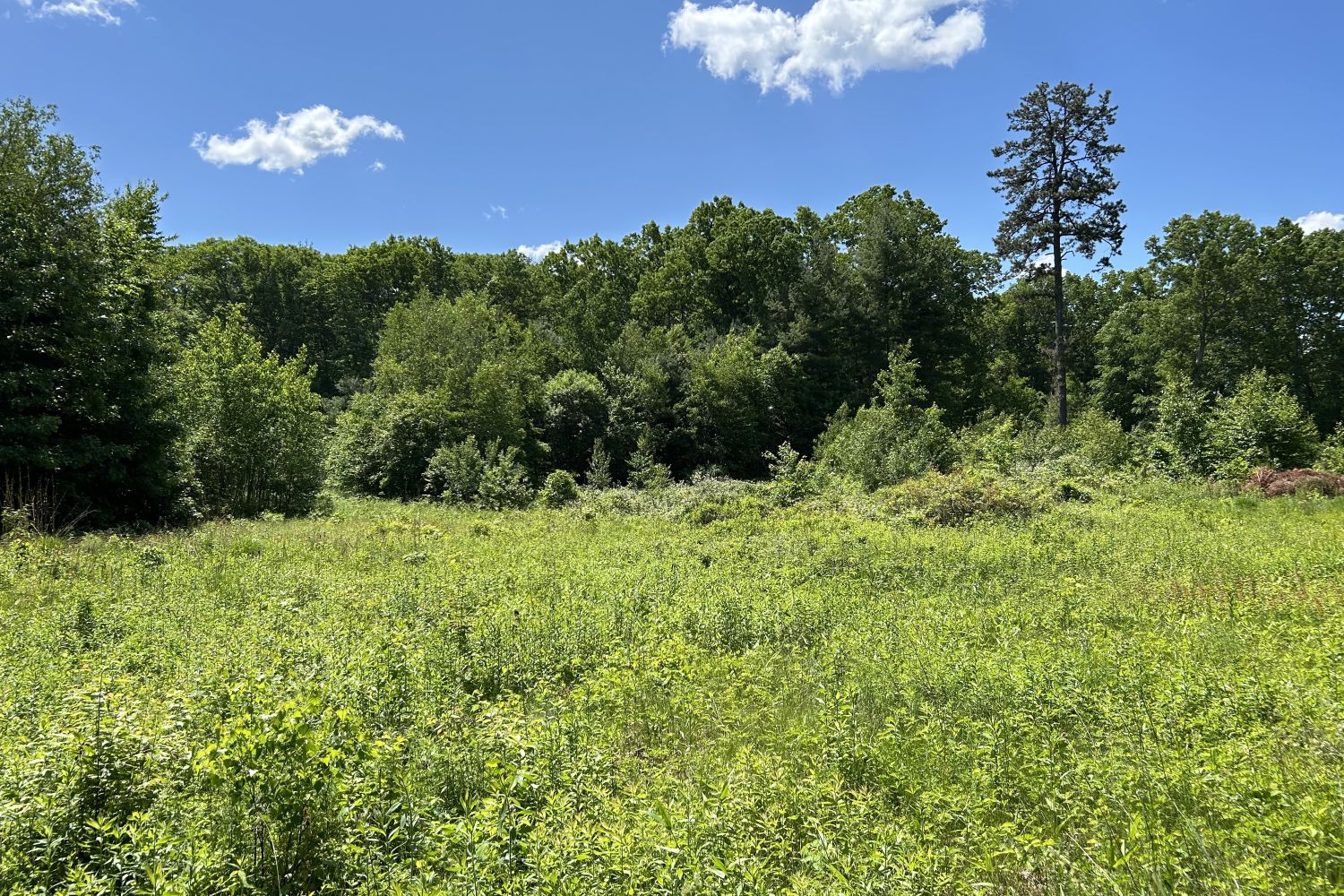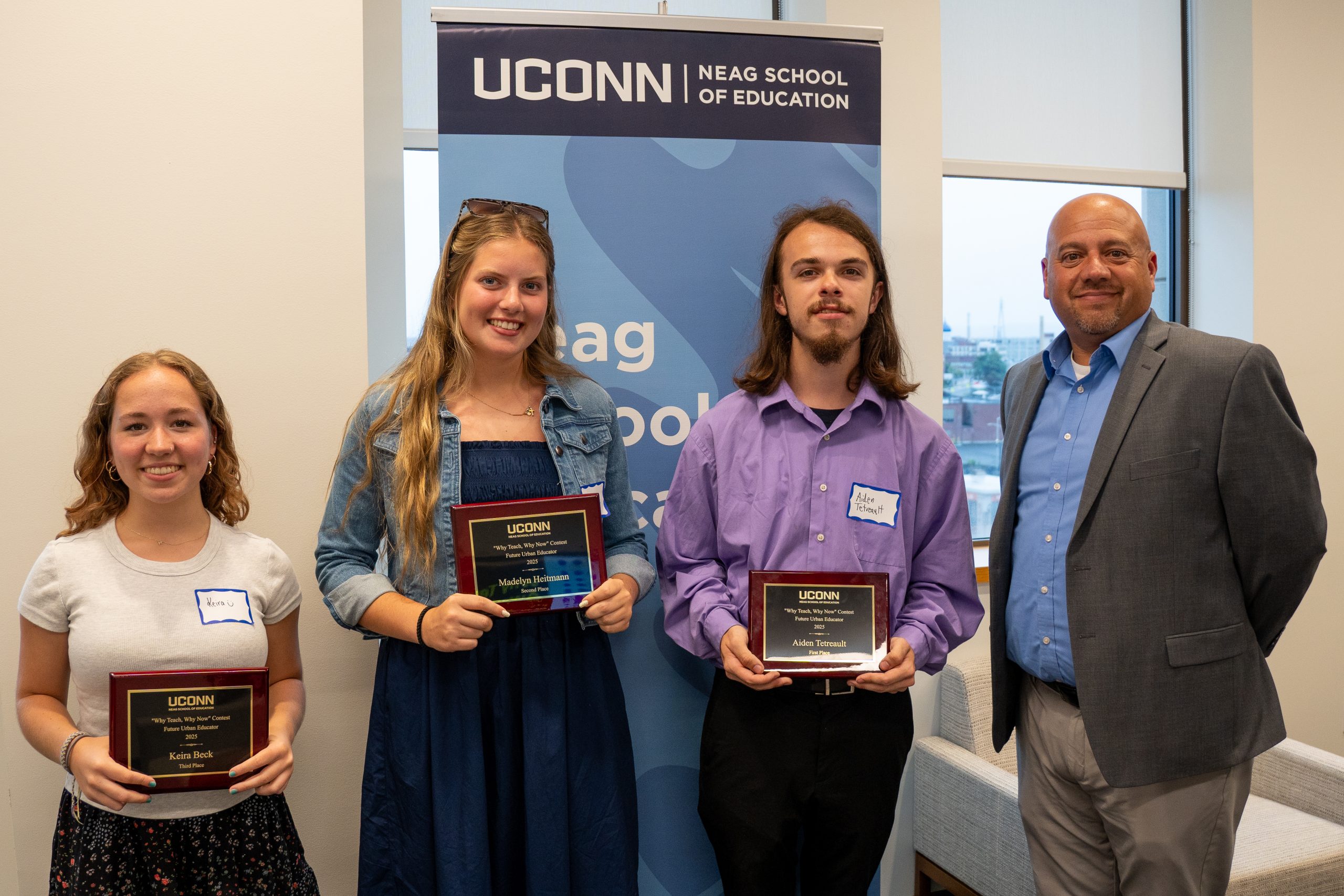With its turn-of-the-century Branford House mansion and a lawn that stretches to a lighthouse that serves as its iconic landmark, UConn’s Avery Point campus is an elegant location that draws visitors to enjoy a panoramic view of Long Island Sound, complete with sea breezes and waves breaking on the shore.
In the midst of a pandemic that has limited indoor activities at art galleries, the Avery Point campus offers an ideal location for an outdoor art exhibition, including sculpture, short films, and video artworks projected on the lighthouse and Branford House. Open Air is an exhibition of 11 outdoor installations through Sept. 30 and a selection of short art films, video artworks, and light installations presented in the evening on Thursday, Aug. 27 through Saturday, Aug. 28, from 8:30 p.m. to 9:30 p.m.
Charlotte Gray, curator of the Alexey von Schlippe Gallery at Avery Point, says after all campus buildings across the University moved to limited access in March, she began to think about how to continue presenting art to the public.
“Looking at other responses in the community and our beautiful campus grounds, I came up with the idea to offer an outdoor sculpture exhibit,” Gray says. “It ended up turning into a much more dynamic show than we’re able to offer in our indoor space at Branford House. It’s one of those COVID silver linings exceeding our own ambitions and expectations.”
Putting out a call to artists through various online art forums, Gray had what she describes as “an incredible response from artists all over the world,” because so few art galleries and museums could present a new exhibition during the pandemic.
“Because of COVID the availability of artworks and the excitement that artists felt about the show was greatly increased,” she says. “Artists have also been extremely accommodating in delivering and installing their artwork and helping each other. It’s been a wonderful experience as a curator to see how our community is pulling together to produce something different than our usual exhibitions.”
Many works link to the Avery Point campus’ academic focus on marine science: there is video art that relates to whales and sandpipers, a sculpture made from driftwood, and wind-responsive works such as an aeolian harp that makes a humming noise, and a labyrinth constructed of flags that flap in the breeze. The sculpture portion of the exhibition is “Open Air by Day” and the film portion is “Open Air by Night.”
The one work with a direct UConn connection is the short film “Mother of the Blueness” (2020) by Shadia Heenan Nilforoush ’20 MFA, a multidisciplinary artist working in video and performance. Her work seeks to reconcile polarizing senses of identity and re-contextualize ancestral trauma through her family archives and personal narrative. She is the recipient of the Crandall-Cordero Fellowship, the Barbara Bullitt Christian Memorial Award, and is a 2020 semi-finalist for the US Fulbright Fellowship. Her work has been exhibited nationally, including showings in New York, Hartford, Boston, and New Orleans.
Nilforoush’s film interweaves performance art, film, and cut-paper animation. The film progresses through a slow series of moving images that travel between moments of reflection and contemplation and then abruptly shifts to moments of neurosis and absurdism. Beti, the protagonist, portrayed by Nilforoush, seeks to heal the weight of blue in others, using the color blue to speak to the sensory, visceral experience of trauma.
Nilforoush says she uses her multicultural background as an Iranian-American as part of the film’s theme. Her mother was born in Kentucky, her father is Iranian, and her stepfather is Pakistani. She was born in Denver, grew up in Houston, and lived in Kansas City, Chicago, Washington, D.C. and in Louisville, where she earned her BFA from the Hite Art Institute at the University of Louisville, with a minor in psychology before arriving in Storrs. For several years, she has taught a form of yoga that promotes an enhanced feeling of safety for traumatized individuals.
“Mother of the Blueness definitely does pull from my ancestral lineage, but the real seed of it is about trauma,” she says. “It’s something I studied not only in the context of art classes, but I teach yoga and I focus on trauma informed yoga, the whole area that connects yoga and psychology. That’s what ‘Mother of the Blueness’ was about for me — exploring that seed of trauma. How can we face the trauma and break the cycle?”
Nilforoush continues to create new multimedia works, currently working on a photography project near her rural Connecticut home, documenting the landscape with the working title “Garden of Salt.” She says her multiple interests will continue to expand, with an eye toward teaching.
“If we weren’t in a pandemic, I would love to teach art. I love helping students figuring out their skills and attach them to something meaningful, an idea or concept,” she says. “I’ll always continue making work. Right now I’m excited to be moving more in the direction of making work that’s conceptual and meaningful but maybe not as heavy; having fun with materials, my hands and making things just for the sake of making it.”
Among the other works in the exhibition are:
- “Labyrinth” (2020) by Christopher Kaczmarek, a classical seven-circuit labyrinth made from thousands of small flags.
- “Eye Site” (2020) by Michael Fadel and Anna Miller, an outdoor sculptural installation in the form of a 16-foot tall kinetic navigation buoy placed near the Avery Point Lighthouse.
- “Daughter of the Rising Tide” (2019) by Mariken Cochius, a sculpture made of driftwood collected along the banks of the Hudson River and a Catskills reservoir in New York.
- “Hobbes’ Claw—Unsheathed 4” (2016) by Stephen Klema, one in a series of sculptures using the shape of a circular saw blade that investigates the confluence of mechanical processes, organic forms and natural materials, and reflects the dichotomy of destruction and
creation. - “Daily Battles” (2013) by Beatrice Coron and James Stewart, an art film about a work of art that brings a new dimension to the medieval fantasies as metaphors.
- “Breacher” (2020) by Ben K. Foley and Allison Tanenhaus, an homage to the whales that paved the way for the development of New London in the 18th century.
For more information, visit the Open Air website.


